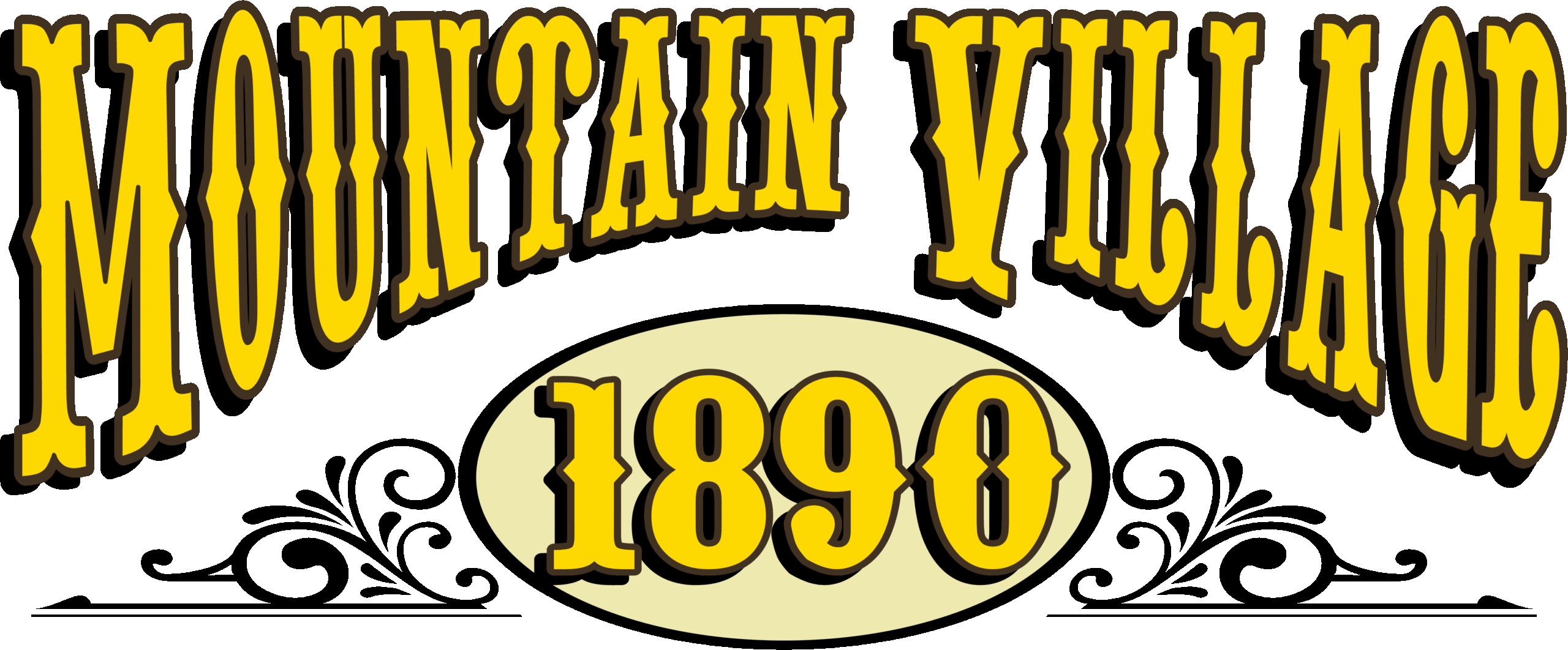free admission - self guided tour
There are 9 main historic structures in Mountain Village 1890 and numerous additional outbuildings and smaller things to see, all of which have been brought here from various sites in the Ozark mountain region. Some of the buildings were brought intact from as far away as 125 miles, and one from only a few blocks distant. All of the buildings are authentic, as are their contents – and all were being used in 1890.
Depot - 1903
Built in 1903 at Pyatt, Arkansas, this depot was part of the Missouri Pacific Line when the railroad first came through North Arkansas. Many of the original artifacts are on display, including the waiting bench by the wood stove, the stove itself and the baggage cart in front of the depot. The depot serves as the entrance to the Village and now houses the main gift shop with a fine selection of Ozark crafts as well as other fine gifts.
Jailhouse
Called a "hot box," this all metal building would have been used to house hard-to-handle prisoners or escapees. The jail would have been placed in direct sunlight with no shade and no protection from wind, rain or snow. Originally from Calico Rock, Arkansas, this jail was used in the filming of the movie, The Bootleggers.
Train
The locomotive was the yard engine for the Acme Brick Company at Perla, Arkansas. Engine 7085 was built by the H. K. Porter Company of Pittsburgh, Pennsylvania, with boiler #450 and Serial No. 369. It is a narrow gauge railroad engine, half the size of engines passing by the depot when it was in operation. The engine has a "cow catcher" on the front – it threw any recalcitrant cows that did not respond to the bell off the track so they wouldn’t be run over.
Church - 1888
Our community church was built in 1888 at Blue Eye, Missouri, on the Arkansas/Missouri state line. It was moved 126 miles intact to become a part of Mountain Village 1890. According to tradition, the church was placed on the highest ground of the village, to be looked up to. It was the religious and social center of the village. Double doors on the front allowed a coffin to be carried into the church.
The church would have served any denomination, and any minister in the area could preach on Sunday morning. The ministers -- Catholic priests first, followed by Presbyterians, Methodists and Baptists -- were paid from the money in the collection plate. If the congregation liked the sermon, they'd put more in the collection plate, so the ministers really worked for their salary.
Lynch/Flippin House - 1874
Built in 1874 by a riverboat captain named Lynch, this house was originally located at the present site of the Marion County Airport. The settlement there, known as Goatsville, predates the town of Flippin.
In 1904, a tornado destroyed all the homes and businesses in Goatsville except this house. The railroad was just about to be finished in the area, so the residents decided to relocate near the railroad. Since the Flippin family, who had married into the Lynch family, was the first in the area, the settlement took the same name.
Martin House - 1830
The oldest building in the village, the Martin House was originally constructed of logs, hand hewn by slaves, in about 1830. The structure, a dog-trot two-story home with a two-story porch, was brought log by log from northwest of Jasper, Newton County, Arkansas, near what is now the Buffalo National River. It is one of the oldest buildings remaining in the Ozarks.
Historically, the house is significant because Herbert Hoover stayed in this home for about three weeks in 1893. At the time, he was employed as a surveyor for the United States Land Office and had graduated from Stanford University. Ozark villages of the time didn’t have motels or inns, so strangers had to stay in private homes, much like bed and breakfast facilities today.
Uncle Willie's Cabin
Uncle Willie’s Cabin is the only building in the Village for which the date of construction is not known. Local folklore says that the cabin was built by a slave as a home for himself and the white boy he raised after the boy's mother died. The cabin was built just a mile and a half away, long before Bull Shoals was known as anything but a rough, rocky spot in the White River.
There is no chimney for a stove or fireplace, so the residents apparently stayed warm with whatever was available. Cooking was probably done outside on an open fire, and much later with an old kerosene stove. The back room was added on at a later date, and the loft above the main floor was probably used for sleeping and storage. In the fall, the walls would be "chinked" with a mixture of mud and straw or moss to keep out the cold. As weather warmed up in the spring, the chinking was taken out to allow the breezes in.
General Store - 1889
Our general store was built in 1889 in Buford, Arkansas, by George N. Nelson. It was located across the street from the school house that is in the Village today. If you had lived in the late 1800s, you'd have been able to tell it was a store even if it didn't have a sign. All you'd have to do is look on the front porch. There you'd see one of the most important items in the store -- a coal oil pump. Coal oil was the best lighting fuel available in the Ozarks at that time.
You'd also see scales, on which were weighed both outgoing and incoming goods. Bars on the windows were made from wagon wheels straightened out by the blacksmith. This particular store had a well or cistern on the other side of the porch. Things to be kept cool were lowered into the well, which helped keep them fresh.
Blacksmith & Coffin Shop - 1878
Built in 1878 in Dawt, Missouri, the blacksmith shop originally sat along the shoals of North Fork River before it forms Norfork Lake. In the 1890s the blacksmith was a "jack of all trades." He made shoes, harnesses, coffins and tools, and also did repair work on all farm items.
Many of the old implements here will be of interest to visitors, as will be those in the next area, the coffin shop. In his spare time, the blacksmith made coffins for individuals who would then store them until they were needed. There were no funeral homes or insurance in those days, so the communities all took care of their own.
Jordan House - 1864
This fine old log house, a two "pen" style with a center dogtrot, was built by Col. William B. Jordan, a Confederate veteran, sometime soon after he moved his family in the mid-1860s to the nearby settlement of Monkey Run, Baxter County, Arkansas, about 20 miles from the Village.
Col. Jordan was a Justice of the Peace in Monkey Run, as well as being a barber. There are many artifacts on display that are original to the house. Jordan's great-grandchildren came to the Village to put the furnishings exactly as they were when their great-grandparents were using them. Shortly after the house was moved to the Village, a tornado went through Monkey Run and this house would have been lost if it had been in its original location.
Bank - 1881
Built in 1881 in Ash Flat, Arkansas, this is the last remaining all wood frame bank building in Arkansas. It was in business until 1935, when the state banking department required all banks to move out of wood frame buildings and into less flammable structures. The bank was usually the finest building in town to assure the residents that the bank was a sound institution.
The bank was capitalized with $5,000. Deposits were insured against fire or theft, but not embezzlement or bankruptcy. The bank specialized in small loans. There was usually only one person running the bank, and he took the money home with him for lunch!
Dr's Office/Bank - 1881
In the back room of this particular bank was the Village doctor’s office. In that era, the doctor was usually like the circuit riding preacher – he had an office in each town, usually in the rear of another building. Residents could tell if the doctor was "in" if his shingle was out.

